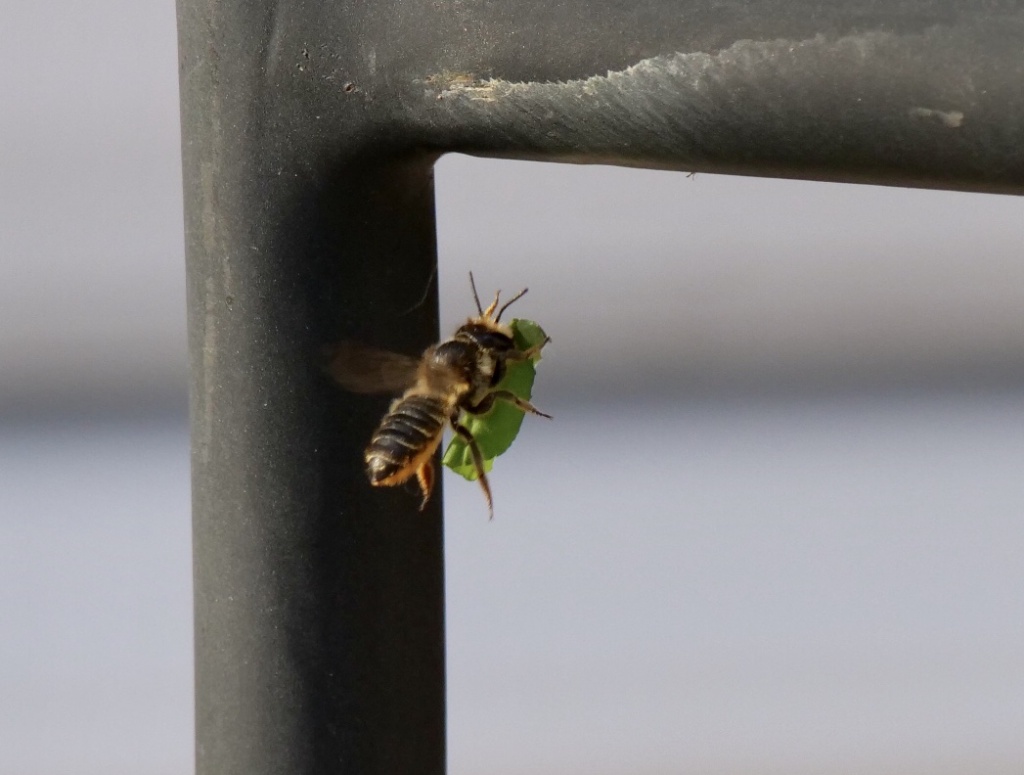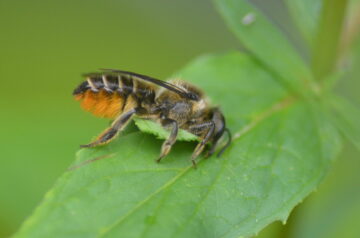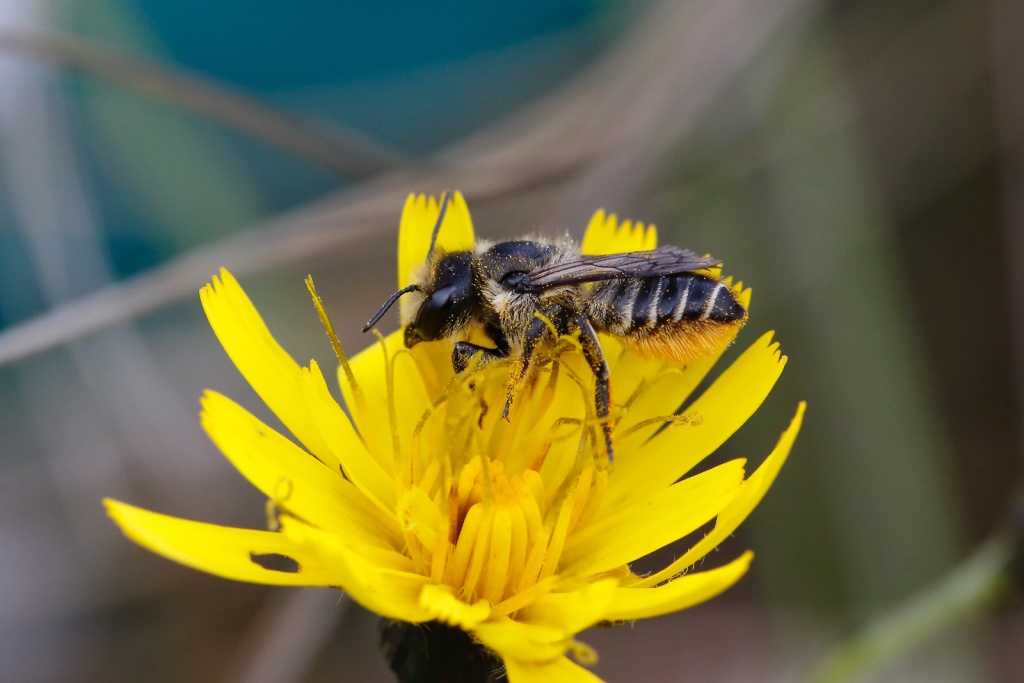Found in gardens, the Patchwork Leafcutter Bee has a bright orange pollen brush and nests in bee hotels.
Fast facts
- Common name
- Patchwork Leafcutter Bee
- Scientific name
- Megachile centuncularis
- Bee group
- Species of leafcutter bee (genus Megachile)
- When to see it
- June – August
Description
A garden visitor, Patchwork Leafcutter Bees can be found nesting in your garden bee hotel. With an entirely orange pollen brush, it is one of the more distinctive leafcutter bees.
Identification
Females
A medium-sized bee, females have a bright-orange pollen brush beneath their abdomens with the orange hairs extending right to the tip. Other leafcutter species have black hairs at the tip. From above, these orange pollen-collecting hairs appear as a ‘halo’ around the abdomen. There are also defined white hair bands across the abdomen. It is a relatively small bee compared to other leafcutter species.
Males
Males are more challenging to identify and look similar to other male leafcutter bees. Unlike Willughby’s Leafcutter Bee – another common garden visitor – the males do not have modified front feet.
Ecology
A species of leafcutter bee, females cut sections of leaf with their jaws to use as nesting material. In gardens, rose leaves are preferred, and if you find semi-circular holes cut out of your garden plant leaves, you have likely had a leafcutter visitor! Within her nest, females will use these cut leaves to create a series of thimble-like leaf parcels.
Each parcel is made up of 10 or more sections of leaf and bound together with a saliva-like substance. Within each of her parcels is an egg supplied with a mixture of nectar and pollen. Females can be found occupying bee hotels but also nest in dead wood.
Regional distribution
Patchwork Leafcutter Bee is one of the more widespread leafcutter bees in the region. It is likely to be found in gardens and nesting in garden bee hotels.

Spotted this bee?
Share your sighting to the North East Bee Hunt and contribute to the conservation and study of our region’s bees.



